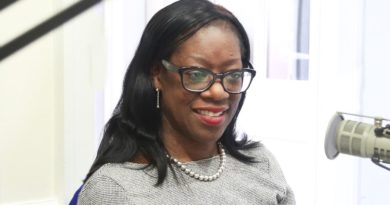Should Brain Scans Be Used As Evidence in Trademark Litigation?
By Matthew Chun
In a recent paper in Science Advances, researchers have proposed using neuroscientific data from brain scans to “improv[e] the state of evidence-based legal decision-making” in trademark infringement cases. But can — and more importantly, should — such evidence be used? In this blog post, I will review the federal legal standards for trademark infringement, describe the researchers’ proposed use of neuroscientific evidence in trademark litigation, and assess the benefits and limitations of adopting such an approach.
Federal Legal Standards for Trademark Infringement
While trademarks are governed by both state and federal law, federal law — particularly the Lanham Act — provides the primary source of trademark protection. To establish trademark infringement under the Lanham Act, a plaintiff must show that “(1) it has a valid and legally protectable mark; (2) it owns the mark; and (3) the defendant’s use of the mark to identify goods or services causes a likelihood of confusion.” The consumer confusion prong is the most subjective element and typically asks the trier of fact to assess a number of factors, including “the strength of the senior user’s mark, the degree of similarity between the two marks, the proximity of the products, the likelihood that the prior owner will bridge the gap, actual confusion, the junior user’s good faith in adopting its own mark, the quality of the defendant’s product, and the sophistication of the buyers.” It is, therefore, a heavily fact-specific analysis.
A Role for Neuroscientific Evidence?
In trademark infringement suits, consumer confusion (or lack thereof) is frequently demonstrated using survey evidence. This approach is currently preferred by many courts as “the most scientifically valid approach” for evaluating the thoughts or perceptions of relevant consumers. However, as the authors of the Science Advances paper point out, surveys are known to be prone to bias and manipulation, which can be hard to identify and prevent. Indeed, the researchers demonstrated that they were able to substantially influence respondents’ reported perception of similarity between products by designing surveys to be “Pro-Defendant” versus “Pro-Plaintiff” (e.g., by changing the wording and formatting of survey questions).
Does a better alternative to survey data exist? To this, the researchers answer: “Bring in the brain scans.”
There is a well-known and robust phenomenon in neuroscience known as “repetition suppression” in which a person’s neural response declines upon repeated presentation of the same (or similar) stimulus. Importantly, the more visually similar two stimuli are, the faster the brain’s response declines. The authors of the Science Advances paper propose using brain scans to measure a “neural index of visual similarity” that provides a similarity comparison between marks that is less vulnerable to the common pitfalls of survey evidence.
Rather than using the neural similarity index to directly assess consumer confusion, the authors propose a methodology in which the neural similarity index is used to detect biases in trademark litigation surveys based on how closely respondents’ neural similarity indices correlate with their survey responses. The experimental results were promising, with the researchers reporting that their proposed neuroscientifically informed approach could detect “even fairly nuanced forms of bias in self-report evidence.”
Benefits
As the authors discuss, the proposed use of neural data in trademark infringement cases has a number of notable advantages.
- While answering survey questions is a “complex cognitive process” prone to hard-to-tease-out, context-dependent effects, the proposed neural similarity index avoids potential biases by bypassing the question-asking and interpretation process altogether. In fact, participants do not even need to know the purpose of the study or be given instructions about the product comparison they are expected to make.
- While liability in other kinds of cases may require proving a previous “culpable mental state,” the issue of consumer confusion in trademark litigation involves an ongoing perception of the relevant marks — something that brain scans are better suited to measure.
- While the admissibility of brain scan evidence to demonstrate consumer confusion may raise eyebrows under the Daubert standard for scientific expert testimony, these concerns are substantially allayed by only using brain scans for the modest task of detecting bias in surveys that are already used in trademark litigation.
Limitations
On the other hand, several substantial limitations persist.
- Some factors of the Daubert standard, such as error rates and the widespread acceptance of the authors’ proposed approach within the scientific community, will only be determinable with further time and study. This likely will slow the adoption of neuroscientific data in trademark litigation.
- Even if brain scan evidence becomes sufficiently well-established to meet the Daubert standard, there is an ongoing debate about the potential of jurors to overweigh the evidential value of impressive brain-based evidence. Thus, judges may still exclude such evidence under Rule 403 of the Federal Rules of Evidence, which allows for discretion in excluding any evidence “if its probative value is substantially outweighed by a danger of . . . unfair prejudice, confusing the issues, misleading the jury, undue delay, wasting time, or needlessly presenting cumulative evidence.”
Conclusion
While a neuroscientifically informed consumer confusion test for trademark infringement has great promise for reducing the biases and manipulations present in our current system, it is still a nascent proposal. Important evidentiary concerns will need to be overcome — perhaps over the course of many years — before the regular use of brain scans in trademark litigation can become reality.






